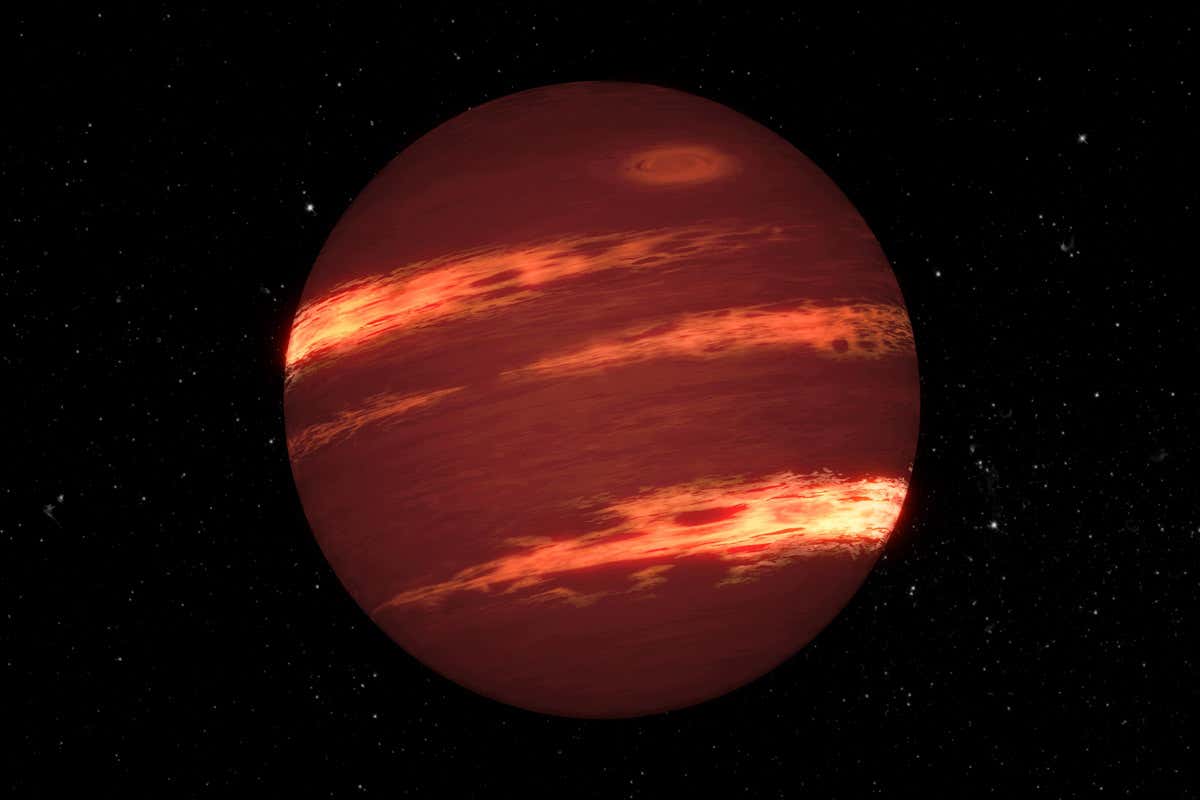*This post may contain affiliate links. This means we may make a commission if you purchase an item using one of our links*
The main differences between the two is that a brown dwarf is a failed main sequence star which due to its inadequate mass, is unable to convert hydrogen to helium whereas a black dwarf is the stellar remnant of a white dwarf (which itself is a remnant of a dead star) when it goes completely dark.
There a more differences to unpack between the two so if you want a more thorough understanding of these differences, continue reading.
What Is A Brown Dwarf?
Table of Contents

The fate of a star is determined mainly by its mass. Every star is born out of significant mass, which creates an immense amount of gravity (and heat) in its core. These temperatures will then allow nuclear fusion to occur, producing an energy resource and light for many entities and lifeforms within its orbital range.
A brown dwarf is a star that is only a fraction the size of our sun. Astronomers often use Jupiter as a standard measure, and for stellar bodies with a mass of more than 13 Jupiters, there is sufficient energy within the core to spark a nuclear reaction.
This reaction involves burning deuterium – or heavy hydrogen – rather than the regular hydrogen that fully-fledged stars use. In order to burn ordinary hydrogen, a star needs a minimum mass of 80 Jupiters. Anything that sits within these upper and lower limits can be considered a brown dwarf.
In essence, a brown dwarf is a stellar object that sits between the mass of a large planet and a small star with insufficient mass to sustain nuclear fusion. A brown dwarf can also be called a “failed star.”
From a distance, brown dwarfs may share a similar appearance to a red dwarf, but these latter stars fuse ordinary hydrogen, differentiating them from a brown dwarf.
What Is A Black Dwarf?

Black dwarfs are stars that have reached the end of their life cycle. This also means that the black dwarf status is what all white dwarf stars will theoretically become once they have run out of their energy resources.
In theory black dwarf stars are very small stellar remnants of stars, specifically white dwarfs, that achieve the end of their life cycle where they will emit insignificant heat or light. This in turn would make them practically undetectable.
According to astronomer Ethan Siegwl, it could take upwards of a quadrillion years for the first white dwarf to go dark.
Therefore, even if black dwarfs are the theorised final stage of stellar remnants, it may never be something we truly uncover, unlike other interstellar bodies that we’ve already like neutron stars or black holes.
As they’re essentially dead white dwarfs, black dwarfs would practically be the same size as them, projected to be roughly 5,000 to 10,000 km in diameter, and are likely to be similar in density too.
For reference an Earth sized black dwarf star would be roughly 200,000 times more dense than the Sun, practically invisible and undetectable due to the lack of light produced and ice cold at 5 degrees kelvin or -268 °C.
With that being said, this is what the theoretical black dwarf would look like so, until we legitimately observe one in the cosmos, we’ll never truly know if these celestial objects will actually match the figures our modern day scientists have hypothesised.
Similarities Between Brown Dwarfs And Black Dwarfs
Brown dwarfs and black dwarfs are only similar in the sense they were both a type of star at one point, with brown dwarfs simply those that failed and black dwarfs the by product of dead white dwarfs that has ages of a quadrillion years.
Other than this, there isn’t too much that is similar between the two.
Differences Between Brown Dwarfs And Black Dwarfs
The differences between brown dwarfs and black dwarfs include the following:
- Brown dwarfs are failed stars whilst black dwarfs are white dwarfs that emit little to no light and are practically undetectable.
- Brown dwarfs are hotter than black dwarfs where they are roughly 125 -175°C whereas black dwarfs exert no heat therefore are -268°C.
- Black dwarfs are between 5 – 10km in size whereas brown dwarfs are 100,000km, significantly bigger than these dark stellar remnants.
- Brown dwarfs have a solar mass between 0.013 – 0.08 whereas black dwarf’s solar mass would be the same as a white dwarf, meaning roughly 1.1 – 1.2 solar masses.
- Brown dwarfs have a projected lifespan said to be infinite just like black dwarfs however, they stop shining in and around 10 million year mark.
- Brown dwarfs convert deuterium into helium via nuclear fusion whereas black dwarfs cannot do this unless a red giant were to be its binary star partner occasionally causing novas on its surface and potentially going supernova if too much mass is accumulated.
- Brown dwarfs will never leave behind stellar remnants like white dwarfs, neutron stars or black holes whilst black dwarfs could still technically go supernova if their intake of mass allows them to reach the Chandrasekhar limit of 1.4 solar masses, they would force the star to collapse, explode and leave behind a neutron star remnant.
Summary
Overall both are different phases of a star which is why they have as many differences as they do.
Black dwarfs are the final phase of a white dwarf whereas brown dwarfs are simply stars that were unable to become main sequence stars and in turn require the usage of deuterium for nuclear fusion. They also do not leave behind a stellar remnant, produce minimal light and stop shining after 10 million years.
Despite both technically falling under the bracket of a star, they still fall under completely different phases in a stars life cycle.

